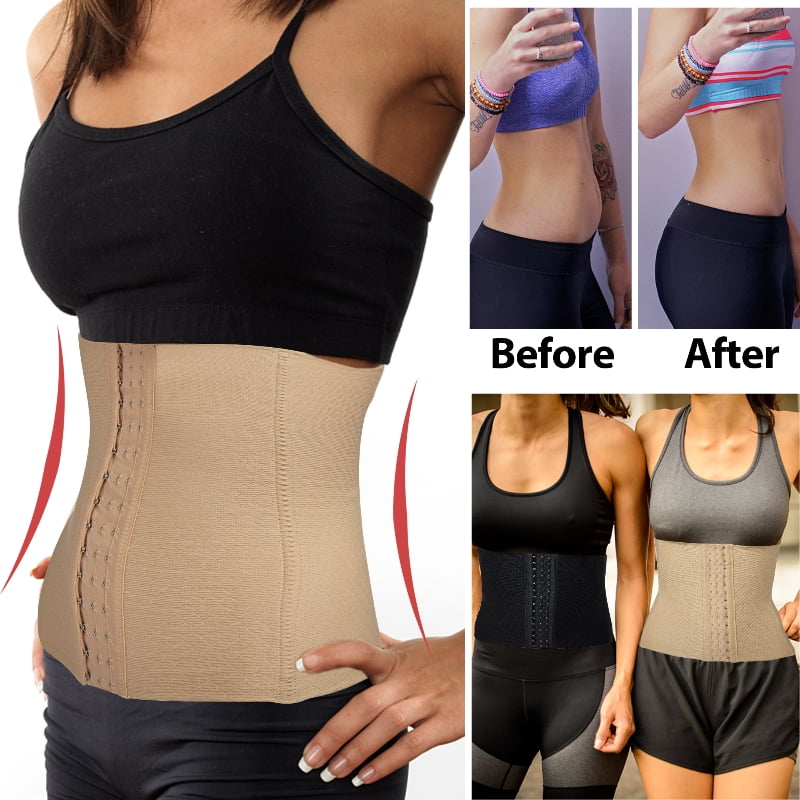Introduction to Waist Training and Corsetry
Discover the path to a reshaped waistline through corset training. Learn how this age-old technique has evolved. Find out how modern-day individuals have transformed their figures and health. Embrace a method that combines history with today’s wellness trends. Understand how dedication and proper use lead to stunning results. Let’s delve into the world of waist training and corsetry, unveiling the secrets behind those captivating silhouettes.

The Journey of Waist Training: Personal Stories
The transformation achieved through waist training is not just about inches lost. It’s a journey of discipline, self-care, and sometimes life-changing experiences. Let’s look at these personal stories that show how corset training has led to more than just a smaller waist.
Penny Brown’s Dramatic Transformation
Penny Brown reshaped her figure dramatically using waist training. Stress-induced weight gain was reversed by corseting 23 hours a day and incorporating exercise. Her waist size reduced from 38 inches to 26 inches in three months. Penny’s story underscores the importance of core strength for effective results in extreme training practices.
Shanell’s Lifestyle Complement
Shanell’s waist training complemented her healthy lifestyle of clean eating and regular exercise. She went from 31.5 inches to a 24.5-inch waist in just 14 weeks, wearing her corset up to 20 hours daily. Shanell’s consistent training and maintenance have kept her results nearly a year later, illustrating the sustainable nature of waist training when paired with a balanced lifestyle.
Heidi’s Turnaround with Waist Training
Heidi transformed her self-image and health through waist training. From a 27-inch waistline to 25 inches in six months, she proves that waist training can be a turning point in an individual’s life, boosting confidence and encouraging better health practices.
Miranda Rights’ Body and Mind Evolution
Miranda Rights credits waist training for her total body transformation and improved mental health. She reduced her waist from 32 inches to 23 inches while maintaining a rigorous fitness and diet regimen. Her personal growth, better posture, and body confidence highlight the psychological benefits of waist training.
Diantha Dove’s Postpartum Journey
After giving birth, Diantha Dove found solace in waist training, losing over 150 pounds and 13+ inches from her waist. Her journey from a 42-inch waist to a natural 27 inches emphasizes waist training as a catalyst for change.
Samantha Lubrano’s Self-Love Through Corseting
Samantha’s waist training began in 2011. Over the course of three years, she lost 30 pounds and trimmed her waist size from 26 inches to 21 inches. Her narrative is a powerful testament to self-respect and the profound psychological impact of embracing one’s body through waist training.

The Science of Corseting: How Does It Work?
Corset training reshapes the body by applying consistent pressure around the midsection. This gradual process gradually shifts the floating ribs and reduces the space in the abdomen. Over time, the body adapts to a slimmer profile, especially when combined with a disciplined lifestyle. Here’s how waist training delivers its effects:
- Redistribution of Mass: Corsets redistribute rather than eliminate body mass. They compact the abdomen and shift the flesh upwards and downwards, leading to a narrower waist.
- Muscle Tone and Posture: Wearing a corset encourages better posture and tones core muscles that help maintain the new waistline.
- Thermogenesis: The tight embrace of a corset promotes thermal activity in the core, which can lead to loss of water weight and stimulates circulation.
- Appetite Control: The physical constriction can lead to a feeling of fullness, prompting smaller, more frequent meals which contribute to weight management.
- Floating Ribs: Regular corseting can lead to the flexibility of the lower ribs, permitting a more pronounced waist reduction.
- Consistency: The key to successful corseting is consistency. Wearing a corset for several hours a day over an extended period will produce more noticeable and longer-lasting results.
Always remember, corsets should support, not constrict painfully. Ensure a proper fit and gradually increase the time and compression to safeguard health while optimizing results. As always, integrating a balanced diet and exercise with corseting is essential for overall wellness and achieving the desired transformation.
Choosing the Right Corset for Effective Training
Selecting the right corset is critical for a positive waist training experience. To maximize benefits and minimize risks, it’s important to understand the factors involved in making an informed choice. Consider the following points when selecting a corset for waist training:
- Quality and Construction: High-quality corsets with strong boning, durable fabric, and proper stitching offer better support and last longer. Avoid cheaply made corsets that might not provide the needed structure.
- Fit and Size: A well-fitting corset should be snug but not uncomfortably tight. Measure your waist accurately and consult sizing charts. Keep in mind that corset sizes usually refer to the corset waist measurement when fully closed, so choose a size that’s 4-7 inches less than your natural waist, depending on your comfort and experience level.
- Type of Boning: Steel boned corsets are preferable for waist training. They offer better shaping and longer-lasting support compared to plastic bones, which can bend and lose shape over time.
- Underbust vs. Overbust: Underbust corsets are typically recommended for beginners as they allow more movement and are easier to wear. Overbust corsets include breast coverage and can offer a more dramatic change in silhouette.
- Closure System: Look for corsets with a strong lacing system, usually at the back, that allows for adjustable sizing and a secure fit. Front closures, such as busk closures, make putting on and taking off the corset easier.
- Fabric: Choose a breathable fabric to ensure comfort during prolonged wear. Cotton-lined corsets can help minimize skin irritation and sweating.
Properly chosen, the corset becomes an ally in reshaping your figure. As with any body modification tool, always listen to your body and proceed with care. Consulting with a corsetry expert or seasoned waist trainer can provide valuable insights for your corset before and after journey.
Establishing a Waist Training Regimen
Creating a consistent waist training routine is essential for shaping your midsection effectively. A structured regimen combines daily wear with gradual tightening to achieve lasting results. Key aspects to consider include setting realistic goals, monitoring progress, and adjusting practices as needed.
Setting Realistic Goals
Begin your waist training journey with attainable targets. Determine the inches you aim to lose and the time frame for these goals. Remember, slow and steady wins the race, preventing harm and encouraging sustainable changes.
Monitoring Progress
Track your progress meticulously. Use a tape measure for waist size every week. Document changes with photos to visualize your advancement. Adjusting your regimen based on observations is crucial to optimizing your results.
Adjusting Practices
Tailor your routine to your body’s feedback. If discomfort arises, reassess the tightness and duration of wear. Enhancing comfort and fit, while maintaining consistency, is vital for a successful transformation. Integrate rest days to allow your body to recover.
Consistency is Key
Wear your corset for several hours each day, as comfort permits. Gradually increase wearing time and tightness as your body adapts. This consistency is the cornerstone of effective waist training and ensuring your corset before and after experience is positive.

The Importance of a Balanced Diet and Exercise
When training your waist with a corset, diet and exercise are crucial. They ensure healthy, sustainable progress. Here’s why they’re important:
- Essential Nutrients: A balanced diet provides nutrients that support overall well-being. Vitamins, minerals, and antioxidants aid the body’s functions while you train.
- Energy Needs: Proper food intake fuels the body. It gives you the energy to wear a corset for hours and stay active.
- Weight Management: Together with corseting, a healthy diet helps manage weight. It controls calorie intake while you reshape your waist.
- Muscle Strength: Exercise strengthens core muscles. This support is essential when your corset is off.
- Flexibility: Regular movement keeps your body flexible. It counters the stiffness that might come from wearing a corset.
- Stamina: Cardio and strength training build stamina. They help the body cope with the rigors of waist training.
Incorporate a variety of foods, including plenty of fruits and vegetables, lean proteins, whole grains, and healthy fats. Stay hydrated and avoid processed foods as much as possible. Pair your diet with a mix of cardiovascular exercises and strength training for best results. This combination not only aids in achieving a sculpted waist but promotes a healthier lifestyle overall.
Maintenance and Long-Term Results of Corset Training
Maintaining corset training results requires consistent practice and dedication. Even after reaching your desired waist size, it’s essential to uphold a routine that sustains your new shape. In this section, we’ll explore maintenance strategies for long-term corseting results, sharing insights from corset enthusiasts who have successfully preserved their transformations.
Consistent Corset Wear
To keep your results, you may want to continue wearing a corset, but less frequently. Instead of daily wear, some choose a few days a week to maintain their shape. It’s about finding a balance that keeps your results without over-reliance on the corset.
Regular Health Monitoring
Continued health checks ensure that waist training remains safe and effective. Keep in touch with a healthcare provider to monitor any changes in your body and adjust your routine accordingly.
Lifestyle and Dietary Choices
A healthy lifestyle further supports long-term corseting results. Opt for nutrient-rich foods and stay active. Maintain a diet that complements your waist training efforts without causing discomfort when corseted.
Exercise for Core Strength
Focus on exercises that build core strength. This ensures your midsection remains toned and supports the waistline you’ve achieved through training. Pilates and yoga are popular choices to maintain core vitality.
Mindful of Body Signals
Listen to your body. If something feels off, take a break. It’s crucial to pay attention to any signals your body sends and respect its limits to avoid any injury or undue strain.
Sharing your corset before and after journey can inspire others and reinforce your commitment to maintenance. Celebrate your achievements, and let your experience encourage those starting their own waist training paths.
By integrating these practices, you can enjoy the benefits of corset training for years to come. It’s not just about the initial transformation but also about the journey of self-care and discipline that follows. Stay committed, and your corseted waist can be a lasting testimony to your dedication.
Real-Life Testimonials and Encouragement
Now let’s hear from those who have embarked on the waist training journey. Their real-life accounts provide a wealth of encouragement. Let their stories inspire you as you consider or continue your corseting experience.
Numerous individuals have adopted corset training and shared their ‘before and after’ experiences. They unveil the changes not just in their waist size but in their overall health and confidence. Through photos and personal narratives, they demonstrate dedication and patience leading to their striking transformations.
Words of Motivation from the Corseted Community
From novices to long-time waist trainers, the corset wearing community is often eager to encourage newcomers. Their tips, maintenance routines, and motivational words offer a fresh perspective for anyone looking to reshape their waist. These stories remind us that corset training is a personal journey, with each individual setting and reaching their unique goals.
Acknowledging the Efforts Behind the Results
It’s crucial to recognize that these testimonial stories highlight the hard work put into waist training. The remarkable ‘before and after’ photos are proof of consistency in wearing the corset, integrating healthy eating, and exercising. These testimonials serve as proof that achieving a sculpted waistline is a blend of perseverance, a supportive community, and a well-structured plan.
The collective voice of corset wearers rings clear: success in waist training is attainable with the right mindset and tools. Let their lived experiences guide and encourage you to pursue your corseting goals with excitement and determination.